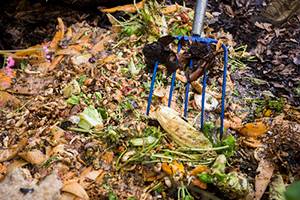Fall Vegetable Garden Care

Fall is an excellent time to start some gardening projects that are often hard to do in the spring. Once you pull your vegetables out of the garden for the year, incorporate some organic material into the soil. It’s common to add organic material in the spring; however, a fall application has several benefits. With the leaves falling from the trees, we have a ready supply of organic material to add to the garden, and the second benefit is that winter will give the organic material time to break down in the soil. Hence, the nutrients are ready for your garden to use next year.
It’s also a great idea to till your garden or work it up in the fall or early winter instead of tilling in the spring. Most years, fall weather is drier than early spring, plus you aren’t on a time crunch trying to get your garden ready before you plant vegetables in the spring. Soil that is worked up when it is dry or just slightly damp is easier to till and is less likely to have large clods, which can easily happen when the soil is wet. If you decide to plant a cover crop, be sure to wait to work the soil till the cover crop has been killed by a frost for the season to get the most significant impact on your soil health.
Another task that can easily happen in the fall is to do a soil test in your garden, lawn, or flower beds, as this allows you to add any necessary nutrients or soil amendments before you plant in the garden in the spring. Typically, the soil lab is less busy in the fall, so the results return faster. Plus, you aren’t impatiently waiting for your results, so you can start planting.
Fall is an often-forgotten time of the gardening year as many of us are ready to be done with the work by the time late fall or early winter shows up, but it can also be an extremely valuable time to get a head start on next year’s garden.

Have questions? Contact our office where our Horticulture Extension Agent will assist you with questions.
Phone: (316) 321-9660
Email: callae@ksu.edu